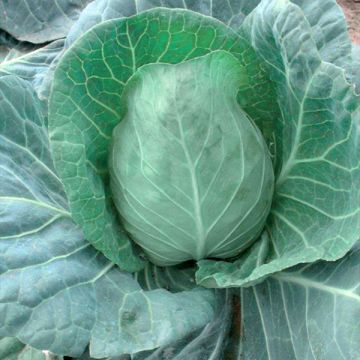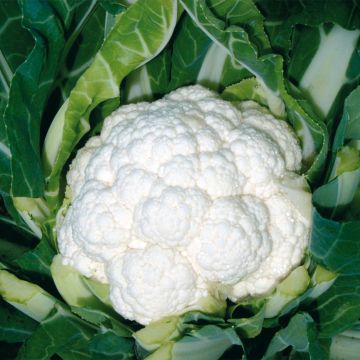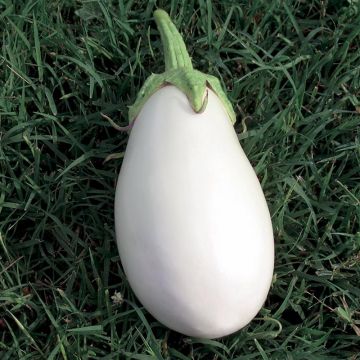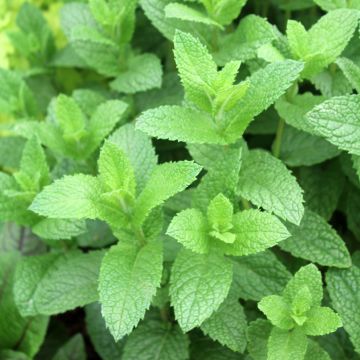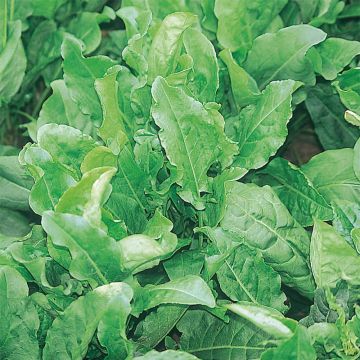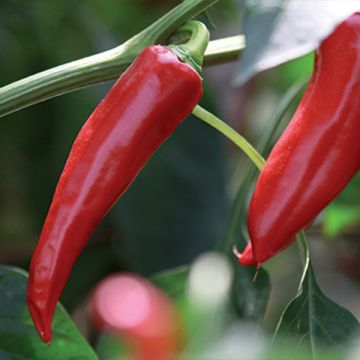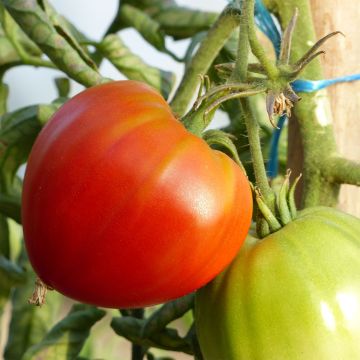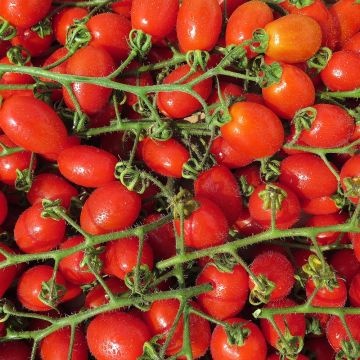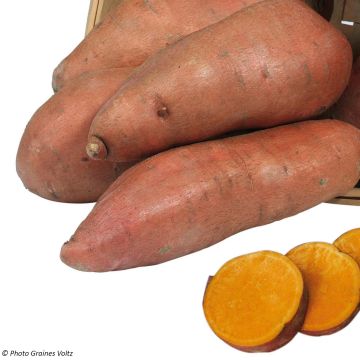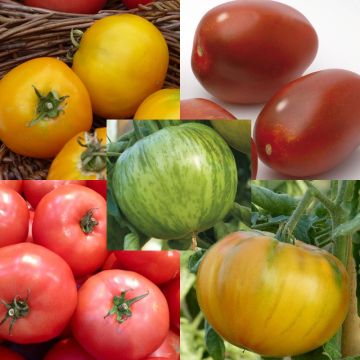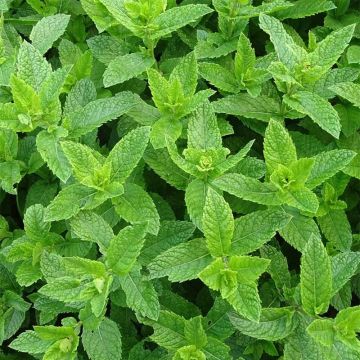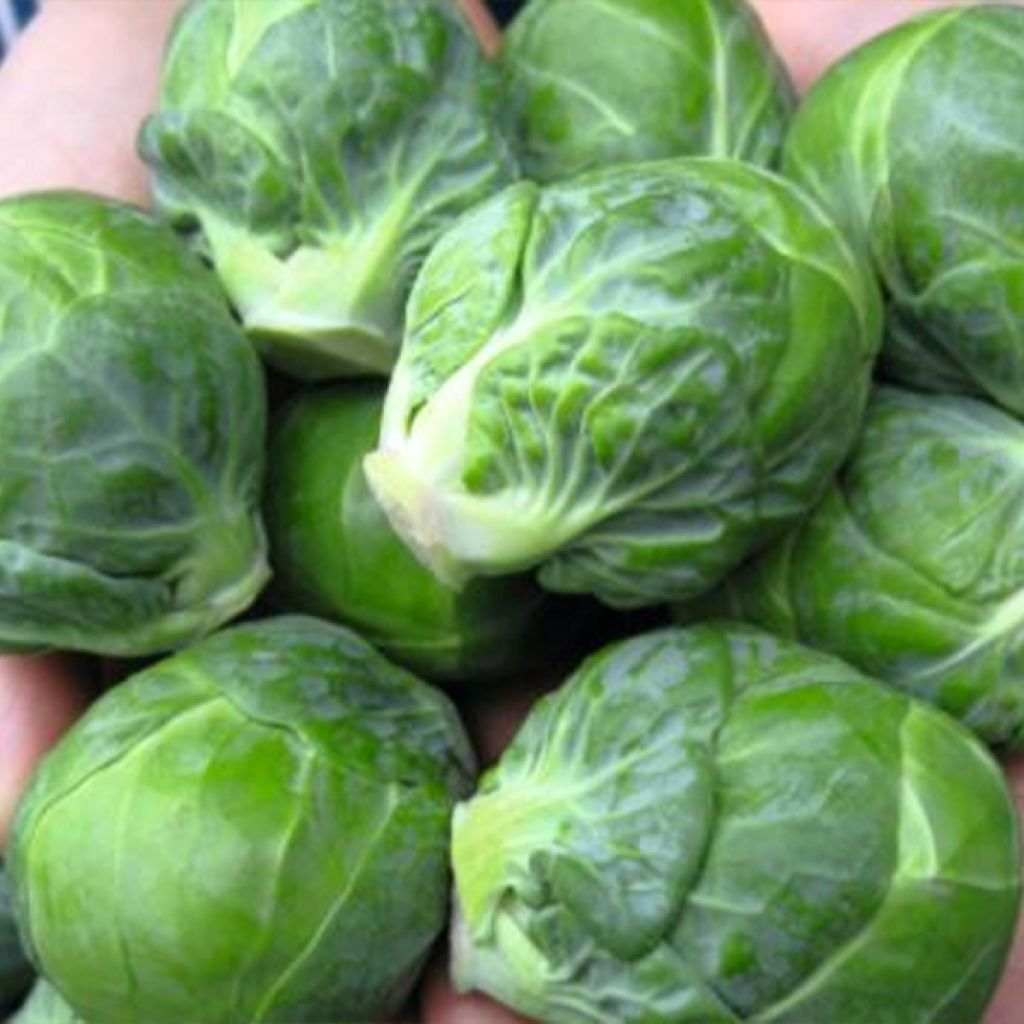

Chou de Bruxelles Marte F1 Bio - Minimottes potagères
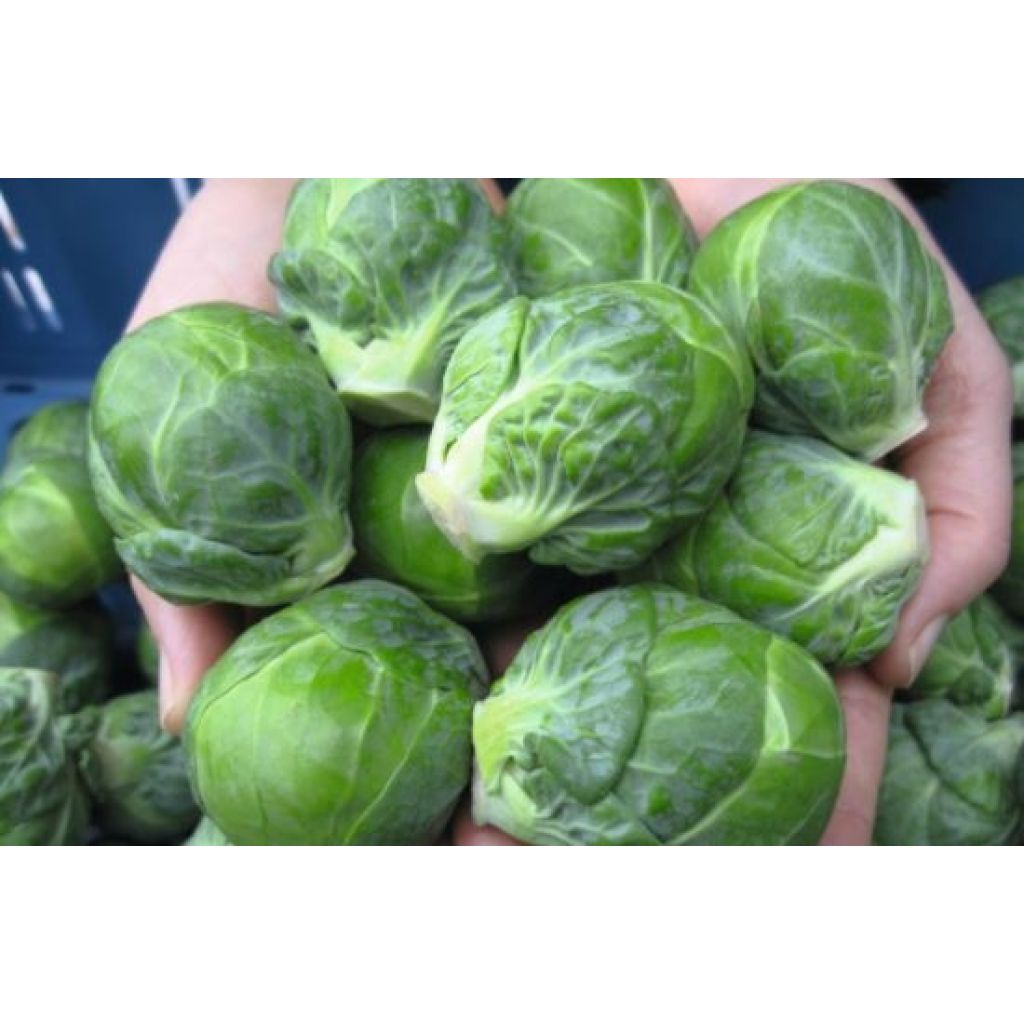

Organic Brussels Sprout Marte F1 plugs - Brassica oleracea gemmifera
Organic Brussels Sprout Marte F1 plugs - Brassica oleracea gemmifera
Brassica oleracea gemmifera Marte F1
Brussels Sprout
Not viable.
Bruno, 05/06/2024
This plant carries a 6 months recovery warranty
More information
We guarantee the quality of our plants for a full growing cycle, and will replace at our expense any plant that fails to recover under normal climatic and planting conditions.
From €5.90 for pickup delivery and €6.90 for home delivery
Express home delivery from €8.90.
Delivery to Corse prohibited: UE law prohibits the import of this plant from mainland France to Corse as part of the fight against Xylella fastidiosa. Please accept our sincere apologies.
More information
Description
The Marte F1 Brussels Sprout is an excellent hybrid variety, both early, disease-resistant, high-yielding and with very good garden performance. The plant, which can become spectacular, produces particularly large, round and tight Brussels sprout, of a bright green colour. The plug plants of this variety are certified organic. They are planted in May and June, for a harvest in November-December.
The Brussel Sprout is a vegetable whose axillary buds are consumed, forming small heads. The Brussel Sprout belongs to the large Brassicaceae family (formerly Cruciferae), like other Cabbages: Cauliflower, Broccoli, Smooth-leafed Cabbage (or Dutch Cabbage), Savoy Cabbage, Green Cabbage or Curly Cabbage, Kohlrabi, Chinese Cabbage... The Brussel Sprout has the Latin name Brassica oleracea gemmifera. Latin enthusiasts will appreciate the name 'Gemmifera' which refers to gemstones.
Originating, unsurprisingly, from Belgium, this cabbage is a hybrid developed in the 14th century by market gardeners from Saint-Gilles (a municipality in the near outskirts of Brussels), concerned with increasing their productivity. Indeed, growing vertically, the Brussel Sprout takes up little space on the ground and allows for abundant harvests in a minimum of space.
An autumn and winter vegetable par excellence, the Brussel Sprout has a mild, slightly sweet, and very comforting flavour. Carefully cooked, its delicate taste pairs well with bacon, smoked bacon, and chestnuts. It can be consumed cooked, sautéed, braised or even gratinized... Quickly steamed, it is also excellent cold in salads. It is a vegetable rich in fiber, antioxidants, and vitamins C and B.
The Brussel Sprout is a much less demanding vegetable than the majority of cabbages, it likes the sun and moderately rich soil, especially without excess nitrogen. Soil that is too generously fertilized would result in the production of too small, open, or burst heads.
Harvest: Brussel Sprouts are harvested by starting from the bottom of the stem and cutting the small heads with a knife. The harvest extends from September to December depending on the varieties.
Storage: Brussel Sprouts can be stored for 3 to 4 days in the vegetable drawer of the refrigerator. They can also be frozen very well after being blanched for 3 to 5 minutes in salted boiling water.
Gardener's tip: The main enemy of cabbage, the Cabbage White Butterfly (Pieris brassicae), is a pretty creamy white butterfly with small black spots that wakes up from April-May to wreak havoc all summer by devouring its leaves. Don't be caught off guard and opt for prevention by installing an insect-proof cover on market garden hoops. These covers are easy to put in place and reusable to protect, for example, your carrot and leek crops.
Report an error about the product description
Harvest
Plant habit
Foliage
Other Cabbage plants
Planting and care
The Brussel Sprout is a vegetable that is much less demanding than the majority of cabbages. It thrives in moderately rich soil, especially without excess nitrogen. Soil that is too generously fertilised would result in the production of small, open, or burst sprouts.
Planting: Plug plants of this variety are planted in May and June for a harvest from September to December.
First, allow the plug plants to grow by transplanting them into trays or buckets with a diameter of 8 to 13 cm (3 to 5in), filled with compost. Place them in a warm and bright location. Water regularly.
For planting in open ground, choose a sunny and sheltered location. Space the plants 65 cm (26in) apart in all directions. Soak the plant in water for a few moments before planting. Dig a hole, place the plant, and cover with fine soil. Water thoroughly.
To reduce watering, we recommend mulching the soil with thin successive layers of grass clippings, if possible mixed with dead leaves.
During cultivation, water moderately but regularly.
The Brussel Sprout, like all cabbages, is quite susceptible to diseases such as Clubroot and pests (Cabbage White Butterfly, Cabbage Fly, Flea Beetle, Gall Midge...). It is very important, for this crop, to pay attention to crop rotation.
Cultivation
Care
Intended location
-
, onOrder confirmed
Reply from on Promesse de fleurs
Vegetable plants
Haven't found what you were looking for?
Hardiness is the lowest winter temperature a plant can endure without suffering serious damage or even dying. However, hardiness is affected by location (a sheltered area, such as a patio), protection (winter cover) and soil type (hardiness is improved by well-drained soil).

Photo Sharing Terms & Conditions
In order to encourage gardeners to interact and share their experiences, Promesse de fleurs offers various media enabling content to be uploaded onto its Site - in particular via the ‘Photo sharing’ module.
The User agrees to refrain from:
- Posting any content that is illegal, prejudicial, insulting, racist, inciteful to hatred, revisionist, contrary to public decency, that infringes on privacy or on the privacy rights of third parties, in particular the publicity rights of persons and goods, intellectual property rights, or the right to privacy.
- Submitting content on behalf of a third party;
- Impersonate the identity of a third party and/or publish any personal information about a third party;
In general, the User undertakes to refrain from any unethical behaviour.
All Content (in particular text, comments, files, images, photos, videos, creative works, etc.), which may be subject to property or intellectual property rights, image or other private rights, shall remain the property of the User, subject to the limited rights granted by the terms of the licence granted by Promesse de fleurs as stated below. Users are at liberty to publish or not to publish such Content on the Site, notably via the ‘Photo Sharing’ facility, and accept that this Content shall be made public and freely accessible, notably on the Internet.
Users further acknowledge, undertake to have ,and guarantee that they hold all necessary rights and permissions to publish such material on the Site, in particular with regard to the legislation in force pertaining to any privacy, property, intellectual property, image, or contractual rights, or rights of any other nature. By publishing such Content on the Site, Users acknowledge accepting full liability as publishers of the Content within the meaning of the law, and grant Promesse de fleurs, free of charge, an inclusive, worldwide licence for the said Content for the entire duration of its publication, including all reproduction, representation, up/downloading, displaying, performing, transmission, and storage rights.
Users also grant permission for their name to be linked to the Content and accept that this link may not always be made available.
By engaging in posting material, Users consent to their Content becoming automatically accessible on the Internet, in particular on other sites and/or blogs and/or web pages of the Promesse de fleurs site, including in particular social pages and the Promesse de fleurs catalogue.
Users may secure the removal of entrusted content free of charge by issuing a simple request via our contact form.
The flowering period indicated on our website applies to countries and regions located in USDA zone 8 (France, the United Kingdom, Ireland, the Netherlands, etc.)
It will vary according to where you live:
- In zones 9 to 10 (Italy, Spain, Greece, etc.), flowering will occur about 2 to 4 weeks earlier.
- In zones 6 to 7 (Germany, Poland, Slovenia, and lower mountainous regions), flowering will be delayed by 2 to 3 weeks.
- In zone 5 (Central Europe, Scandinavia), blooming will be delayed by 3 to 5 weeks.
In temperate climates, pruning of spring-flowering shrubs (forsythia, spireas, etc.) should be done just after flowering.
Pruning of summer-flowering shrubs (Indian Lilac, Perovskia, etc.) can be done in winter or spring.
In cold regions as well as with frost-sensitive plants, avoid pruning too early when severe frosts may still occur.
The planting period indicated on our website applies to countries and regions located in USDA zone 8 (France, United Kingdom, Ireland, Netherlands).
It will vary according to where you live:
- In Mediterranean zones (Marseille, Madrid, Milan, etc.), autumn and winter are the best planting periods.
- In continental zones (Strasbourg, Munich, Vienna, etc.), delay planting by 2 to 3 weeks in spring and bring it forward by 2 to 4 weeks in autumn.
- In mountainous regions (the Alps, Pyrenees, Carpathians, etc.), it is best to plant in late spring (May-June) or late summer (August-September).
The harvesting period indicated on our website applies to countries and regions in USDA zone 8 (France, England, Ireland, the Netherlands).
In colder areas (Scandinavia, Poland, Austria...) fruit and vegetable harvests are likely to be delayed by 3-4 weeks.
In warmer areas (Italy, Spain, Greece, etc.), harvesting will probably take place earlier, depending on weather conditions.
The sowing periods indicated on our website apply to countries and regions within USDA Zone 8 (France, UK, Ireland, Netherlands).
In colder areas (Scandinavia, Poland, Austria...), delay any outdoor sowing by 3-4 weeks, or sow under glass.
In warmer climes (Italy, Spain, Greece, etc.), bring outdoor sowing forward by a few weeks.

































